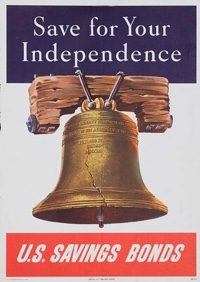7.12% Inflation Price! — My Cash Weblog
 (As previewed again in September, inflation has been ticking up and the brand new annualized charge on Collection I bonds shall be over 7%. Inflation-linked bonds do nicely when inflation is larger than anticipated, which is at the moment the case. Each single I bond will earn this charge ultimately for six months, relying on the preliminary buy month. The same old full semi-annual replace is under.)
(As previewed again in September, inflation has been ticking up and the brand new annualized charge on Collection I bonds shall be over 7%. Inflation-linked bonds do nicely when inflation is larger than anticipated, which is at the moment the case. Each single I bond will earn this charge ultimately for six months, relying on the preliminary buy month. The same old full semi-annual replace is under.)
Financial savings I Bonds are a novel, low-risk funding backed by the US Treasury that pay out a variable rate of interest linked to inflation. With a holding interval from 12 months to 30 years, you possibly can personal them as a substitute for financial institution certificates of deposit (they’re liquid after 12 months) or bonds in your portfolio.
New inflation numbers have been simply introduced at BLS.gov, which permits us to make an early prediction of the November 2021 financial savings bond charges a few weeks earlier than the official announcement on the first. This additionally permits the chance to know precisely what a October 2021 financial savings bond buy will yield over the following 12 months, as an alternative of simply 6 months. You possibly can then examine this towards a November 2021 buy.
New inflation charge prediction. March 2021 CPI-U was 264.877. September 2021 CPI-U was 274.310, for a semi-annual enhance of three.56%. Utilizing the official method, the variable element of rate of interest for the following 6 month cycle shall be 7.12%. You add the mounted and variable charges to get the overall rate of interest. If in case you have an older financial savings bond, your mounted charge could also be as much as 3.60%.
Recommendations on buy and redemption. You possibly can’t redeem till after 12 months of possession, and any redemptions inside 5 years incur an curiosity penalty of the final 3 months of curiosity. A easy “trick” with I-Bonds is that in case you purchase on the finish of the month, you’ll nonetheless get all of the curiosity for the complete month – identical as in case you purchased it at first of the month. It’s finest to present your self a couple of enterprise days of buffer time. Should you miss the cutoff, your efficient buy date shall be ran into the following month.
Shopping for in October 2021. Should you purchase earlier than the tip of October, the mounted charge portion of I-Bonds shall be 0%. You may be assured a complete rate of interest of 0.00 + 3.54 = 3.54% for the following 6 months. For the 6 months after that, the overall charge shall be 0.00 + 7.12 = 7.12%.
Let’s have a look at a worst-case state of affairs, the place you maintain for the minimal of 1 yr and pay the 3-month curiosity penalty. Should you theoretically purchase on October thirty first, 2021 and promote on October 1st, 2022, you’ll earn a ~3.87% annualized return for an 11-month holding interval, for which the curiosity can be exempt from state earnings taxes. Should you theoretically purchase on October thirty first, 2021 and promote on January 1, 2023, you’ll earn a ~4.57% annualized return for an 14-month holding interval. Evaluating with the finest rates of interest as of October 2021, you possibly can see that that is a lot larger than a present high financial savings account charge or 12-month CD.
Shopping for in November 2021. Should you purchase in November 2021, you’ll get 7.12% plus a newly-set mounted charge for the primary 6 months. The brand new mounted charge is formally unknown, however is loosely linked to the true yield of short-term TIPS, and is thus very, very, very prone to be 0%. Each six months after your buy, your charge will alter to your mounted charge (set at buy) plus a variable charge based mostly on inflation.
If in case you have an present I-Bond, the charges reset each 6 months relying in your buy month. Your bond charge = your particular mounted charge (set at buy) + variable charge (complete bond charge has a minimal flooring of 0%). So in case your mounted charge was 1%, you’ll be incomes a 1.00 + 7.12 = 8.12% charge for six months.
Purchase now or wait? On condition that the present I bond charge is already a lot larger than the equal alternate options, I’d personally purchase in October to lock within the excessive charge for the longest attainable time. Who is aware of what’s going to occur on the following reset? Both means, it appears worthwhile to make use of up the acquisition restrict for 2021 both in October or November. You might be additionally getting a a lot better “deal” than with TIPS, because the mounted charge is at the moment damaging with short-term TIPS.
Distinctive options. I’ve a separate submit on causes to personal Collection I Financial savings Bonds, together with inflation safety, tax deferral, exemption from state earnings taxes, and academic tax advantages.
Over time, I’ve gathered a pleasant pile of I-Bonds and take into account it a part of the inflation-linked bond allocation inside my long-term funding portfolio.
Annual buy limits. The annual buy restrict is now $10,000 in on-line I-bonds per Social Safety Quantity. For a pair, that’s $20,000 per yr. You possibly can solely purchase on-line at TreasuryDirect.gov, after ensuring you’re okay with their safety protocols and user-friendliness. You can too purchase an extra $5,000 in paper I bonds utilizing your tax refund with IRS Type 8888. If in case you have youngsters, you could possibly purchase further financial savings bonds through the use of a minor’s Social Safety Quantity.
Observe: Opening a TreasuryDirect account can typically be a trouble as they might ask for a medallion signature assure which requires a go to to a bodily financial institution or credit score union and snail mail. Don’t count on to have the ability to open an account in 5 minutes in your cellphone.
Backside line. Financial savings I bonds are a novel, low-risk funding which might be linked to inflation and solely out there to particular person traders. Proper now, they promise to pay out a better mounted charge above inflation than TIPS. You possibly can solely buy them on-line at TreasuryDirect.gov, excluding paper bonds by way of tax refund. For extra background, see the remainder of my posts on financial savings bonds.
[Image: 1950 Savings Bond poster from US Treasury – source]

